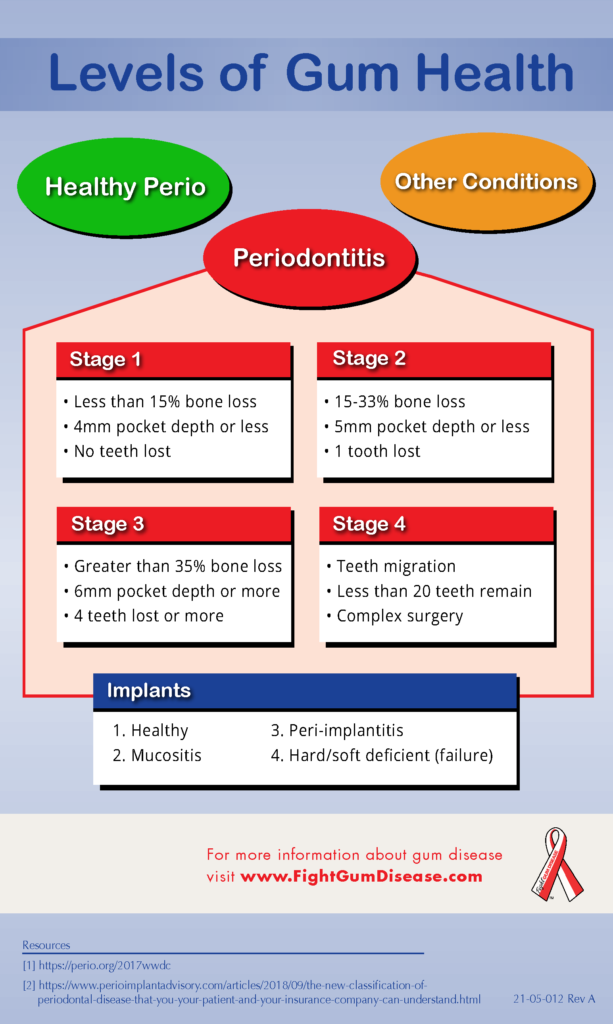Most people just don’t know much about gum disease — hence the creation of this very website. In addition to knowing the signs and symptoms of gum disease, it’s important to understand that gum disease has different degrees of severity, and proper treatment depends on which stage of gum disease is present.
Recently, the American Academy of Periodontology (AAP) and European Federation of Periodontology (EFP) released an updated set of classifications for periodontitis (aka, gum disease). These new classifications are meant to help clinicians explain treatment plans to patients and then identify treatments appropriate at each level. The report comes as a result of the 2017 World Workshop on the Classification of Periodontal and Peri-Implant Diseases and Conditions, and is the first update to the classifications in almost 20 years!
Below, we breakdown the results of the report — in layman’s terms — to help you ask the right questions when you visit your dentist for your regular dental checkups. For the purpose of this blog, we are only focusing specifically on oral health issues caused by periodontitis and not other factors (such as other health issues).
The stages of gum disease are now separated into three main categories and several subcategories:
- Periodontal health and gingival diseases: The first stage constitutes completely healthy gums and teeth. In addition, cases of gingivitis caused by bacteria or other sources also fall into this category.
- Periodontitis: Patients in this category may have what is considered chronic periodontitis, which is broken into four stages (more on that below). Periodontitis may also be brought on by systemic illness.
- Other conditions affecting the periodontium: Other factors include systemic diseases affecting the periodontium, periodontal abscesses or lesions, gingival tissue deformities and conditions, trauma to your bite and/or tooth- and prosthesis-related factors.
When it comes to dental implant health and diseases, the categories are now as follows:
- Healthy dental implant
- Peri-implant mucositis
- Peri-implantitis
- Peri-implant soft- and hard-tissue deficiencies

This new set of classifications also comes with designations for stage, extent and progression of periodontitis and/or peri-implantitis, as well as noting the preferred treatment method and projected treatment outcomes. Periodontitis and peri-implantitis are measured by a scale of Stage I-IV, with IV being most severe, as well as a grade of progression from A-C, with C being the most rapid progression of the disease.
Becoming more familiar with the updated classifications and names for the various forms of gum disease will arm you with the right questions to ask your dentist during your next visit, especially if you suspect you have a serious form of gum disease.
If you have a Stage II or higher case of periodontitis, one option for treatment may be the LANAP protocol for gum disease or the LAPIP protocol for failing dental implants. These minimally invasive treatments will spare you the need for painful cutting and sewing of your gums while still successfully addressing your oral health problems.
Regardless of your oral health status or preferred choice for treatment, it’s important that you see your dentist every 3-6 months to keep your teeth and gums healthy and your smile in prime condition.

